Most aquarium plants are known to grow fast. There are a few varieties that can grow faster than others and can significantly increase in size too.
However, if you are looking for fasting-growing aquarium plants, you can refer to the following list.
The Best Fast Growing Aquarium Plants
- Amazon Frogbit
- Amazon Sword
- Dwarf Sagittaria
- Hornwort
- Java Moss
- Water Wisteria
- Marsilea Hirsuta
- Micro Sword
- Brazilian Pennywort
- Giant Hygro
- Duckweed
- Anacharia
- Aponogeton Crispus
Amazon Frogbit
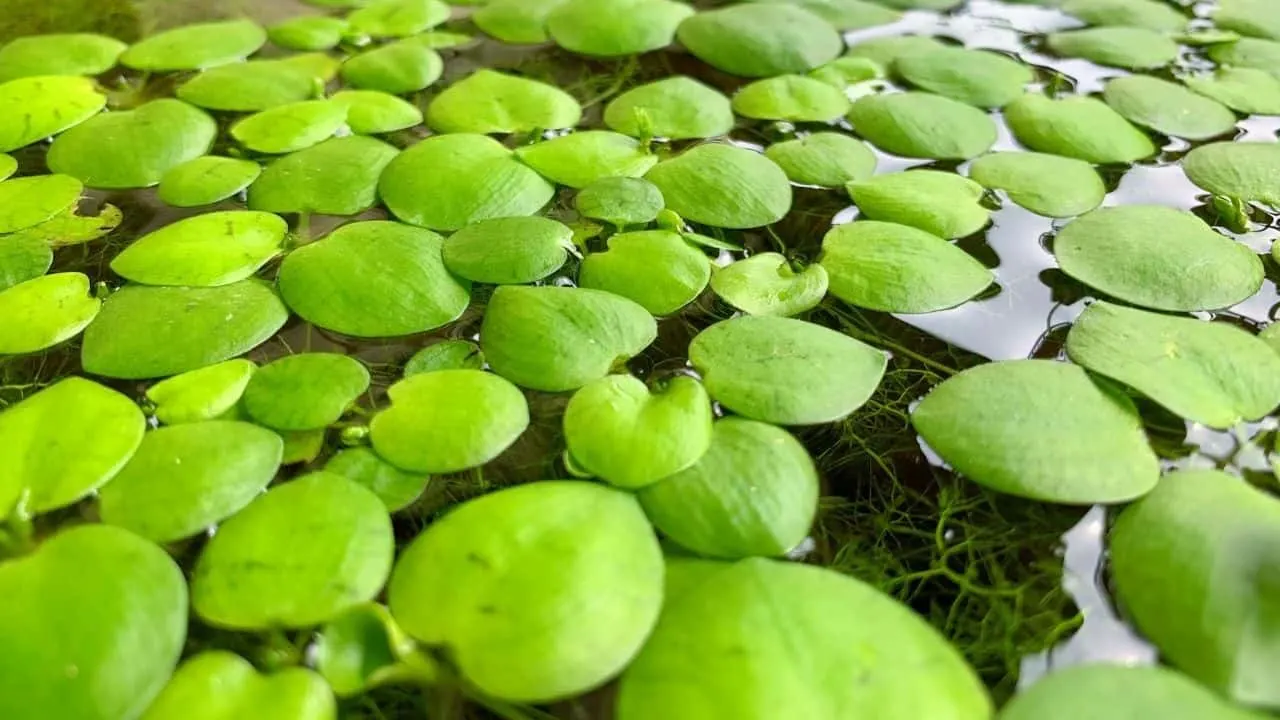
This is a floating plant well known in South America as a sponge plant since it has sponge-like leaves.
Its binomial nomenclature and basic plant care requirements include:
- Common name: West Indian sponge plant and smooth frogbit
- Family: Hydrocharitaceae
- Scientific name: Limnobium laevigatum
- Max height: 20 Inches (50.8 cm)
- Care complexity: Easy
- Lighting needs: Moderate
- Growth rate: Fast
- Additional CO2 required: none
- Recommended position: Surface
- Fertilization: liquid fertilizer
- Temperature: 64 to 84 degrees Fahrenheit (17.8 to 28.9 degrees Celsius)
- pH: 6.0-7.5
The top part of the leaves should remain dry at all times, or else the plant will start to rot.
You must also ensure that you change the water weekly in the aquarium.
Amazon Sword (Echinodorus grisebachii)
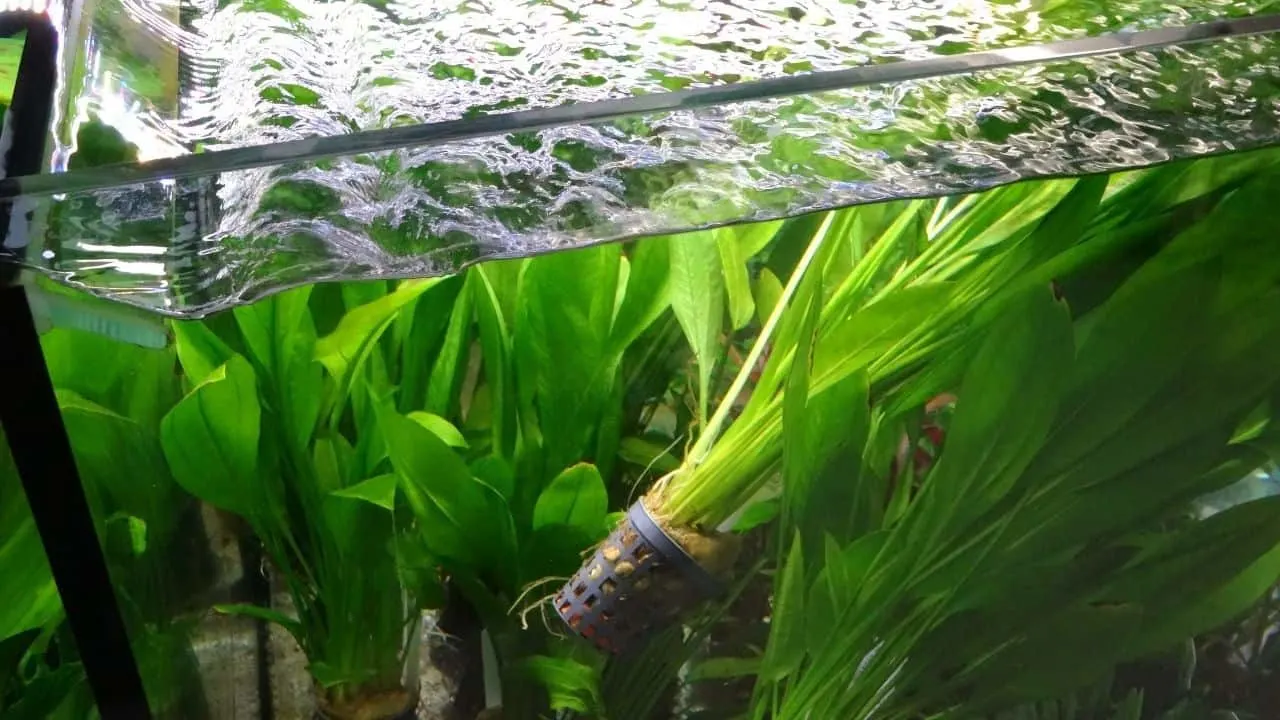
Amazon Sword is the perfect plant choice for beginners as it does not have many requirements, and they will find it very easy to take care of the species.
This plant is very hardy and can survive under a wide range of temperatures, and also does not require as much light as other plants.
Amazon Sword got its name from its sword-like leaves, which are its most attractive feature. Its binomial nomenclature and basic plant care requirements include:
- Scientific name: Echinodorus grisebachii
- Common names: Amazon Sword
- Family: Alismataceae
- Temperature: 70-80 degrees Fahrenheit
- Fertilizer: root tabs and iron-rich supplements
- Soil: Requires nutrient-rich soil
- Lighting: Medium to high
- Growth rate: moderate
- Placement: Background
Dwarf Sagittaria
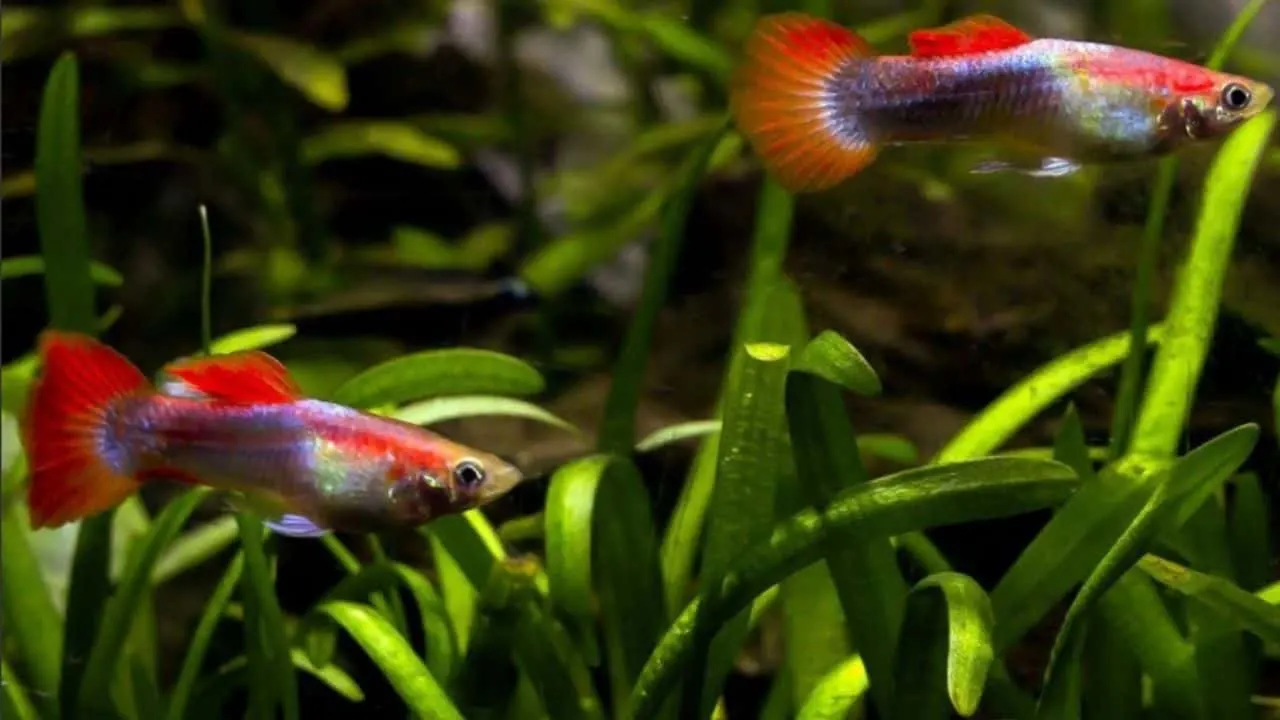
Photo Credit: @ph_reefer on Instagram!
Dwarf Sagittaria is a hardy plant capable of getting used to any surroundings. This plant can live in all sorts of climatic conditions.
You could go weeks without fertilizing it or giving it any attention, and it will still thrive.
Its binomial nomenclature and basic plant care requirements include:
- Common name: Dwarf Sagittaria
- Scientific name: Sagittaria subulate or Sagittaria pusilla
- Height: 15 cm (6 inches)
- Care: Easy
- Lighting needs: Medium
- Growth rate: Fast
- Recommended position: Foreground or midground plant
- Fertilization: Root tabs
While your Dwarf Sagittaria can survive without any fertilization, it does have one demand. It needs iron in huge quantities.
You need to ensure that your Dwarf Sagittaria is always provided with enough iron as it is an essential part of the plant’s growth.
Hornwort
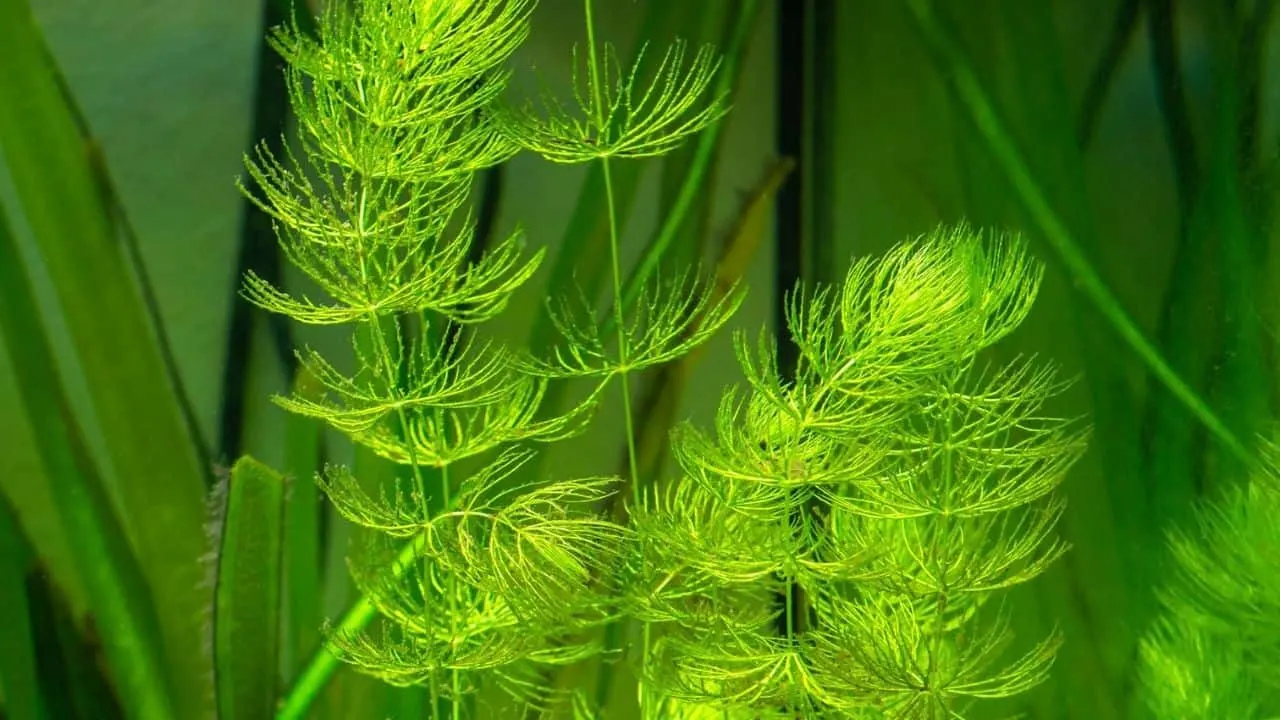
Hornwort is an easy plant to grow in an aquarium. This stunning plant is mostly seen growing in the wild in almost every place on earth other than Antarctica.
Its binomial nomenclature and basic plant care requirements include:
- Common name: horned liverwort or Hornwort
- Scientific name: Anthocerotophyta
- Height: 1 inch (2.5 centimeters)
- Care complexity: easy
- Lighting needs: moderate to high lighting
- Growth rate: moderate
- pH: 6.0 and 7.6
- Hardness: 5 and 15 GH
- Recommended position: mid to background
- Fertilization: not needed
- Temperature: 59 to 86 degrees Fahrenheit
Hornwort should be left to float above your aquarium water, but if you prefer to keep it anchored down into the substrate, that is also doable.
However, where you get to keep your Hornwort usually depends on the type of fish in your tank. Usually, there are two types of fish.
- Mid to lower-level fishes
- Surface dwelling fishes
Java Moss
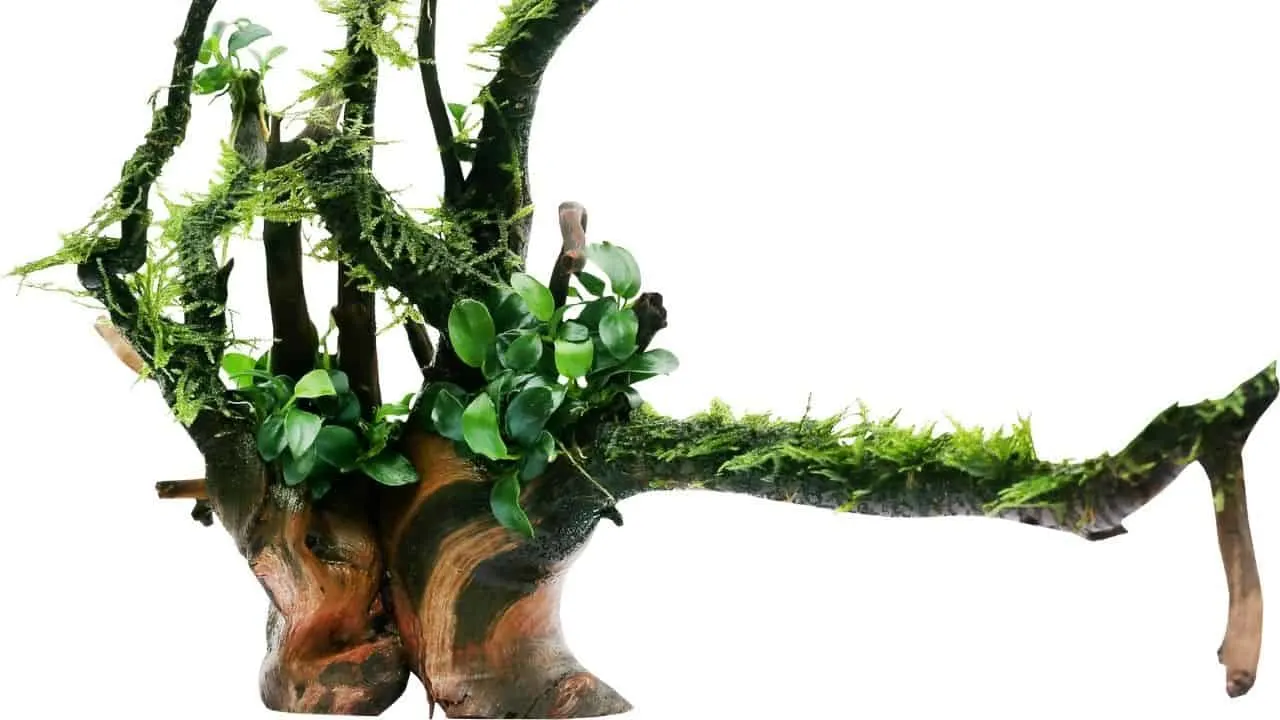
This is a popular and fast-growing plant grown to decorate tanks. Many aquarium hobbyists love it as it can make your aquarium look stunning without putting in much effort.
Another great thing about Java Moss is that it is a hardy plant, which means it can live in many different conditions.
If you want to grow other aquatic plants, this plant’s the perfect fit. Java Moss binomial nomenclature and basic plant care requirements include:
- Max height: 2–4 inches (5–10 cm)
- Care complexity: easy
- Water pH: 6.0 – 8.0.
- Lighting needs: Low light.
- Growth rate: low to moderate
- Additional CO2 required: does not need it
- Fertilization: not needed
- Temperature: 70 – 75 degrees Fahrenheit (21 – 24 degrees Celsius)
Water Wisteria
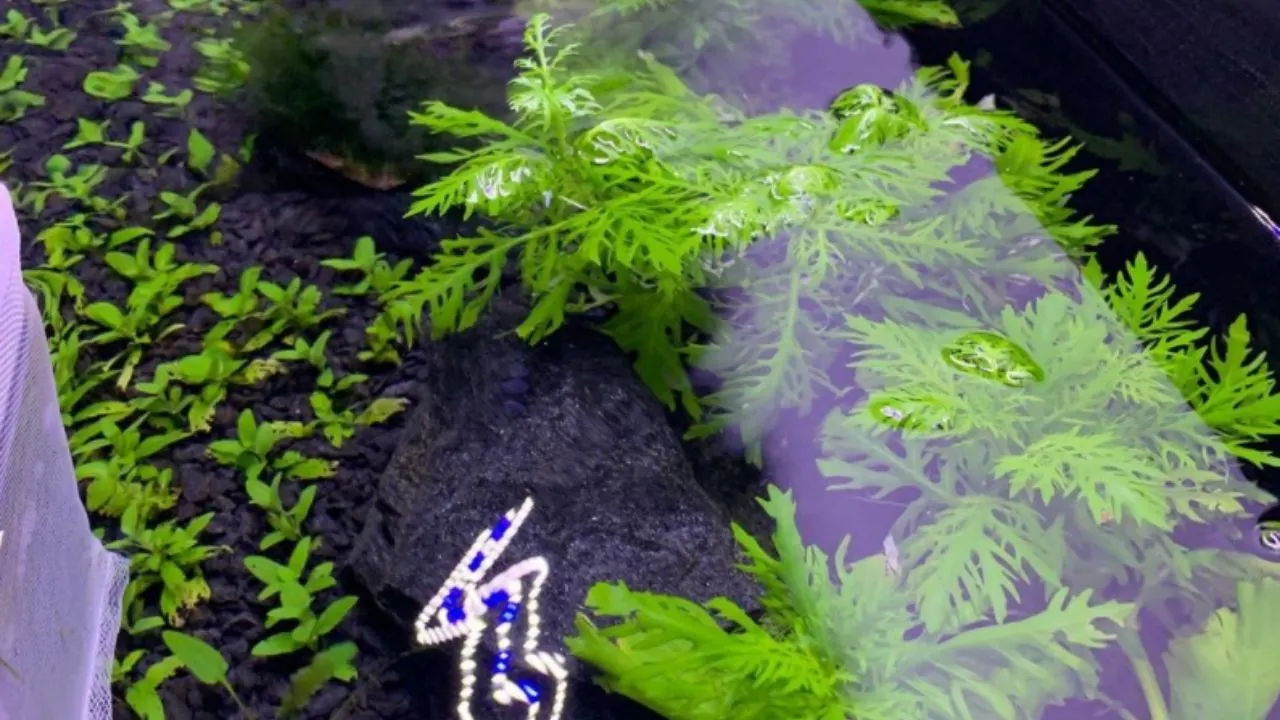
Photo Credit: @kierans.fish on Instagram!
Water wisteria is a tall plant that is often used for carpeting purposes. This is a very hardy plant and that tolerates water parameters of a wide range.
It is also a common aquarium plant and can be found in any shop.
Its binomial nomenclature and basic plant care requirements include:
- Common name: Water wisteria
- Scientific name: Hygrophila difformis
- Family: Acanthaceae
- Max height: 20 inches (50.8 cm)
- Care complexity: Easy
- Lighting needs: Moderate to High
- Growth rate: Fast
- Recommended position: Background or Carpet
- Fertilization: does not need it, but you can provide it for better growth
- Temperature: 70-82 degrees Fahrenheit (21 to 27.8 degrees Celsius)
- pH: 6.5-7.5
- Hardness: 2-8 KH
Water wisteria grows really fast, and you will have to keep an eye on this plant as it can start growing out of the aquarium and sometimes overtake the whole aquarium.
So, try to keep a schedule for the trimming and follow it diligently.
Marsilea Hirsuta
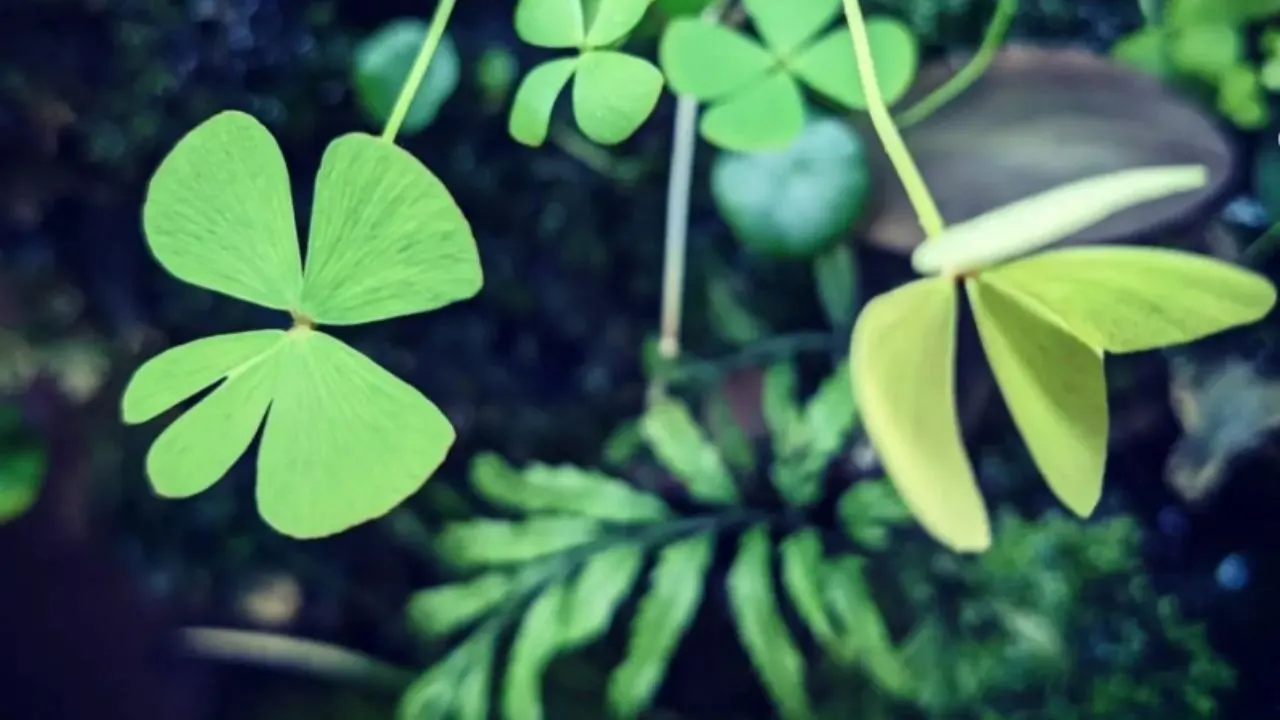
Photo Credit: @aria.aqua.delirium on Instagram!
Marsilea Hirsuta is another carpeting plant that grows extremely fast. Marsilea Hirsuta is very easy to care for, and is a great choice for newbie aquascapers.
Its binomial nomenclature and basic plant care requirements include:
- Common name: Bristly Water Clover
- Scientific name: Marsilea Hirsuta
- Max height: 1 inch (3 cm)
- Hardness: 17.9 ppm to 400 ppm
- Care complexity: easy
- Lighting needs: low
- Growth rate: Fast
- pH: 5 and 7.5
- Recommended position: Foreground and carpeting
- Fertilization: does not need fertilization, but occasional use of liquid fertilizer will help with the growth
- Temperature: 64 to 84 degrees Fahrenheit (17.8 to 28.9 degrees Celsius)
This plant is an ideal choice for aquariums that have freshwater shrimp. This is because it provides a flat surface for shrimps to stand on.
Micro Sword

Photo Credit: @mylowtechaquariums on Instagram!
A short-stemmed plant, Micro Sword’s known to grow up to only three inches.
It is also a carpet plant, which means:
- it can be placed on things to give a grass-like effect
- you can even use tree branches and put Micro Sword on it to make it look like a tree.
Micro Sword is a little difficult to grow as it has more requirements compared to other aquarium plants on this list.
However, with some experience, you will find that this plant is not as hard to care for as you might have once thought.
Its binomial nomenclature and basic plant care requirements include:
- Common name: Micro Sword, Brazilian Micro Sword, and Micro Sword Plant
- Scientific name: Lilaeopsis Brasiliensis
- Max height: 4 inches (10.1 cm)
- Care complexity: moderate
- Lighting needs: high lighting
- Growth rate: Fast
- Recommended position: Foreground
- Minimum tank size: 10 gallons
- pH: 6.8-7.5
- Fertilization: add fertilizers that contain nitrate phosphate and micronutrients. Root tabs ideal
- Temperature: 70 to 83 degrees Fahrenheit (21 to 28 degrees Celsius)
If you want to speed up the growth process for this plant, you can use CO2 supplements or injections. However, this is not necessary.
Brazilian Pennywort
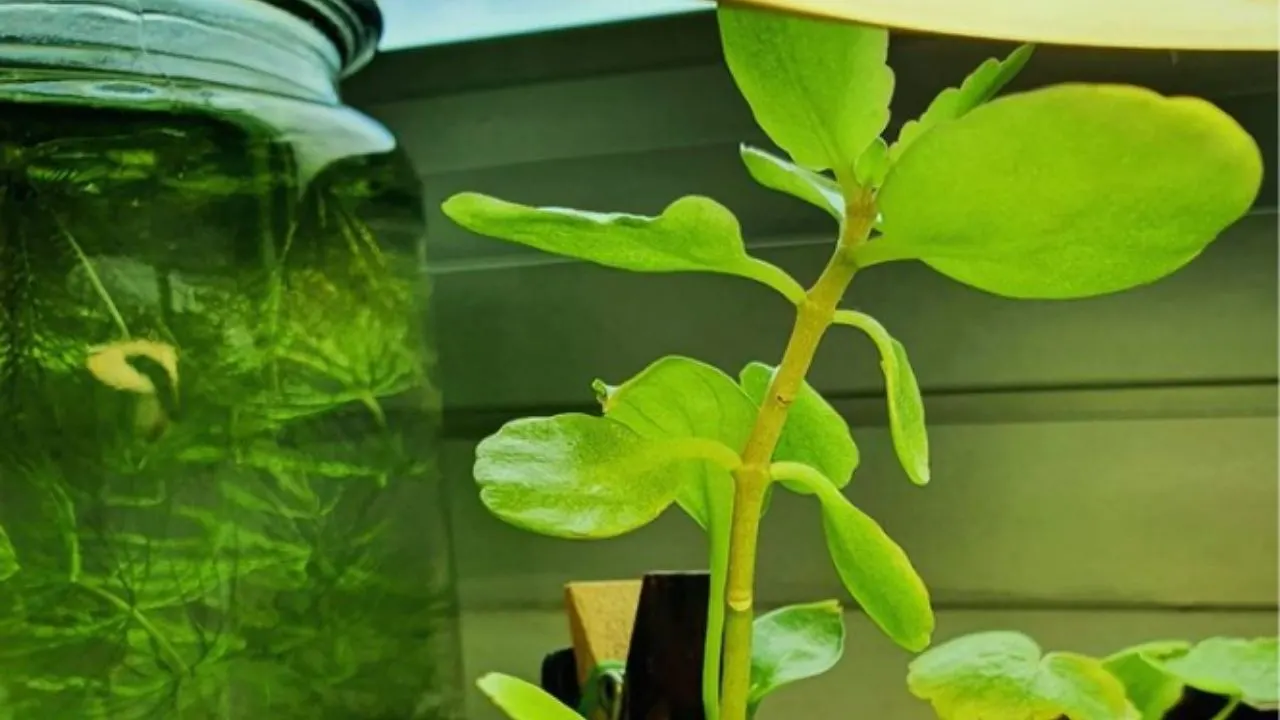
Photo Credit: @tinyfishhomes on Instagram!
Brazilian Pennywort is a well-known plant that grows really fast and is an easy plant to care for. This is a very undemanding plant, and thus, even beginners can place this stunning variety in their aquariums.
Its binomial nomenclature and basic plant care requirements include:
- Common name: Brazilian Pennywort
- Scientific name: Hydrocotyle Leucocephala
- Max height: 8 inches (20.32 cm)
- Care complexity: easy
- Lighting needs: moderate
- Growth rate: Fast
- pH: 6.0 – 7.8
- Recommended position: Floating or Foreground
- Fertilization: require nitrogen-rich fertilizers for growth.
- Temperature: 68 to 82 degrees Fahrenheit (20 to 27.8 degrees Celsius)
Brazilian Pennywort is able to live in water parameters of a wide range. Thus, water requirements are not as big of a deal for this plant.
But you must make sure that the fertilizers you use have high levels of nitrogen in them.
Giant Hygro
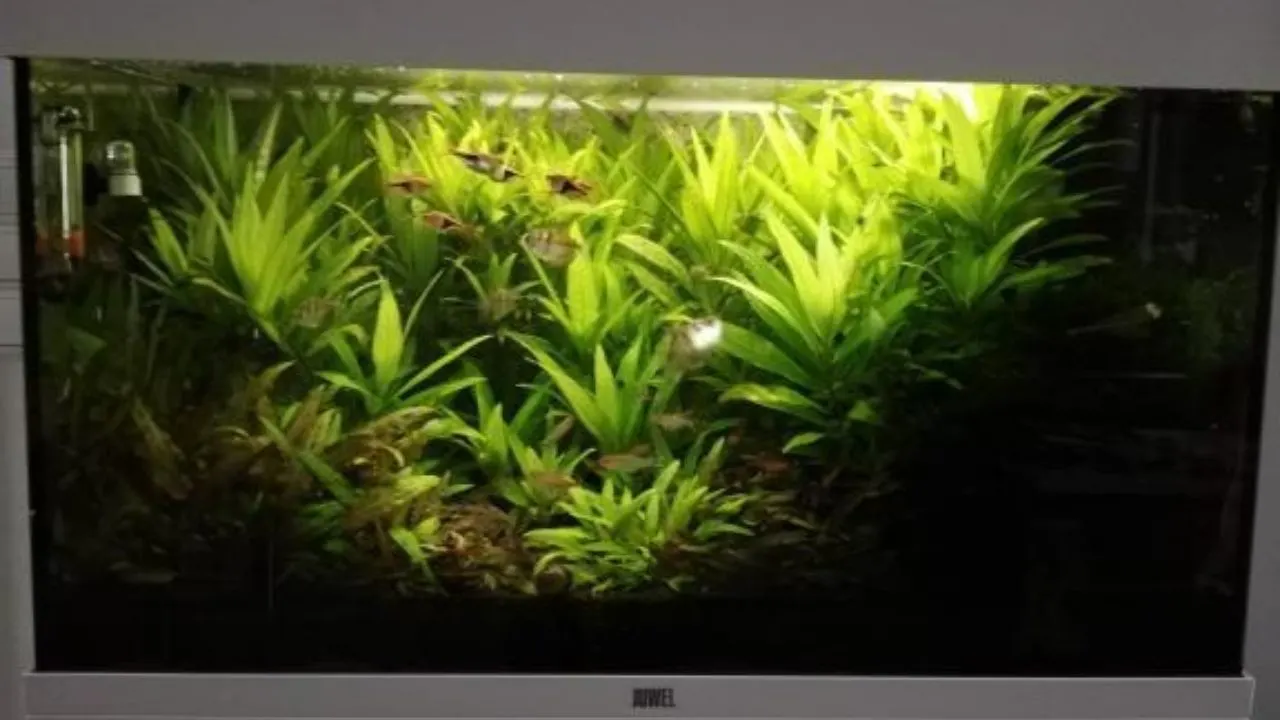
Photo Credit: @aquaspach on Instagram!
Giant Hygro is a stunning plant that is also hardy and can tolerate water parameters of a wide range.
Its binomial nomenclature and basic plant care requirements include:
- Common name: Temple plant.
- Scientific name: Hygrophila Corymbosa
- Max height: 24 inches (61 cm)
- Family: Acanthaceae
- Care complexity: Easy
- Lighting needs: medium
- Growth rate: Fast
- Recommended position: Background
- Fertilization: Once the plant is mature, it will need a lot of fertilizers that are rich in iron
- Temperature: 72 to 84 degrees Fahrenheit (22 to 28.9 degrees Celsius)
- pH: 6.0-7.5
Giant Hygro needs a lot of iron for it to grow properly, or else its growth will become stunted once iron is only present in low amounts.
Thus, provide it with iron supplements as frequently as possible.
Duckweed
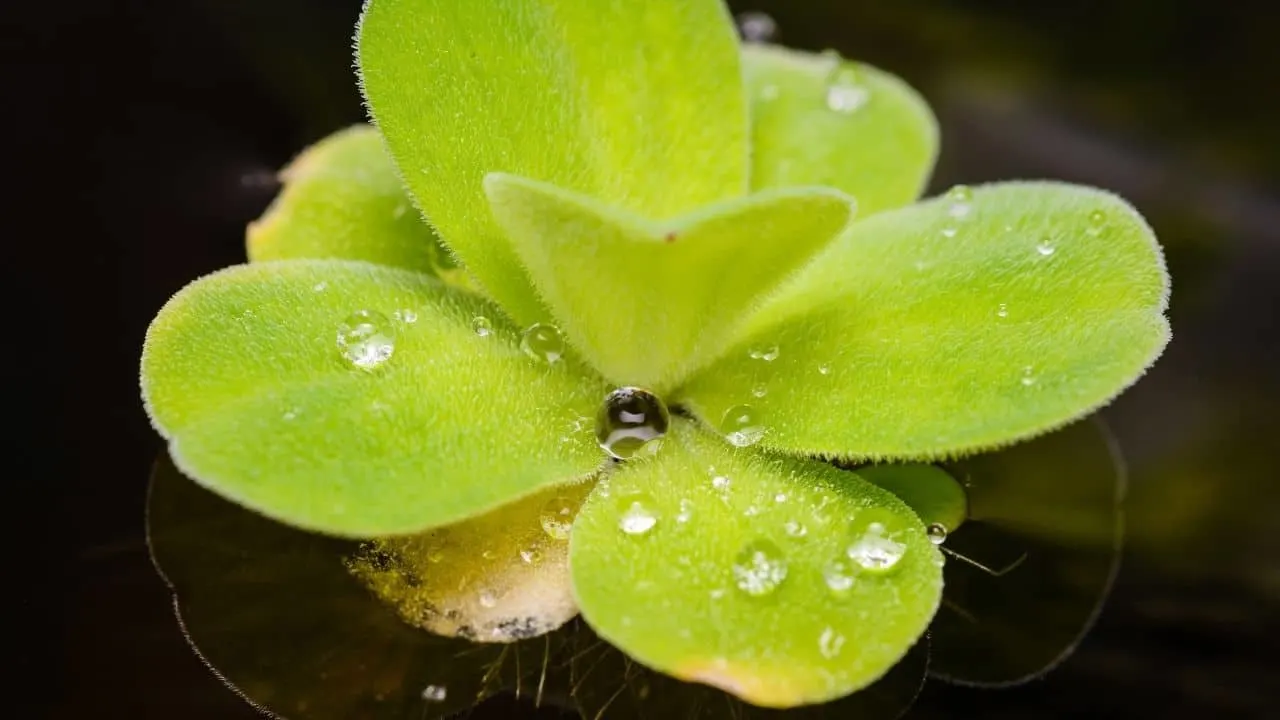
Duckweed is a very low-maintenance plant that is perfect for beginners at plant care.
Many aquarium hobbyists think of this plant as a pest, but if you are able to keep its growth stable, it brings a lot of benefits. Some of them include:
- Purifying the water
- Providing the water with good nutrients
If you do not control the growth of this plant, it will end up occupying the top layers of your entire aquarium, resulting in less sunlight entering the aquarium.
If your aquarium does not get enough sunlight, the oxygen levels inside it will drop greatly.
This plants binomial nomenclature and basic plant care requirements include:
- Common name: water lentils and water lenses
- Scientific name: Lemnoideae
- WATER HARDNESS: 17 to 180 ppm
- Max height: one pod is 0.8 inches long (2 cm long)
- Care complexity: easy
- Lighting needs: low to high
- Growth rate: Fast
- pH: 5.0 to 9.0
- Recommended position: floating
- Fertilization: it does not need any fertilization
- Temperature: 42.8 to 91.4 degrees Fahrenheit (6 to 33 degrees Celsius)
Anacharis
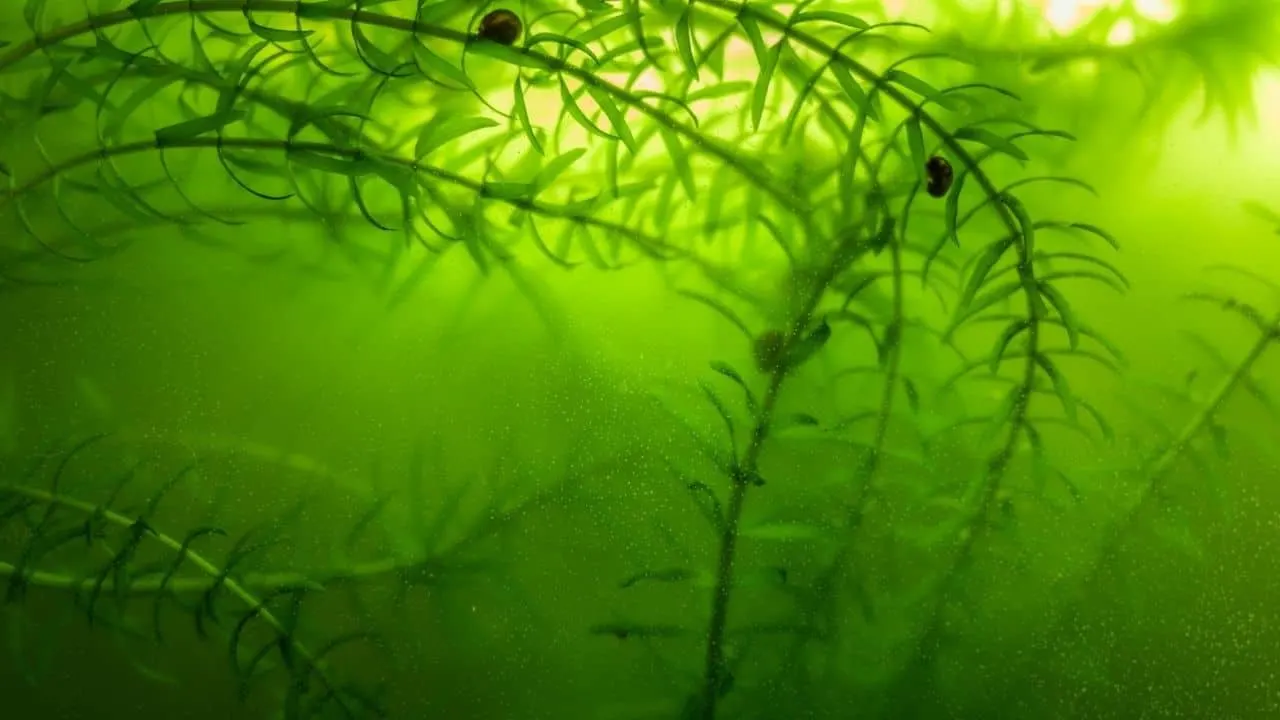
Anacharis is a beautiful plant known for being extremely low maintenance. This plant is very hardy and is one of the best choices for beginners as it does not need a lot of attention.
Its binomial nomenclature and basic plant care requirements include:
- Common name: Brazilian waterweed
- Scientific name: Elodea
- Max height: over 6 feet
- pH: 7 .0 to 8.0
- Care complexity: easy
- Lighting needs: moderate lighting
- Growth rate: fast
- Recommended position: background
- Fertilization: Often needs fertilization
- Temperature: 72- and 78-degrees Fahrenheit (22-25 degrees Celsius)
- pH: 6.5 and 7.5
- Hardness: 3 and 8 dKH
Anacharis can be planted in soil or left floating. When growing Anacharis, make sure they are kept two inches apart so that each of them can get their own share of nutrients.
You can also use more fertilizers so that your aquatic plants thrive.
Aponogeton Crispus
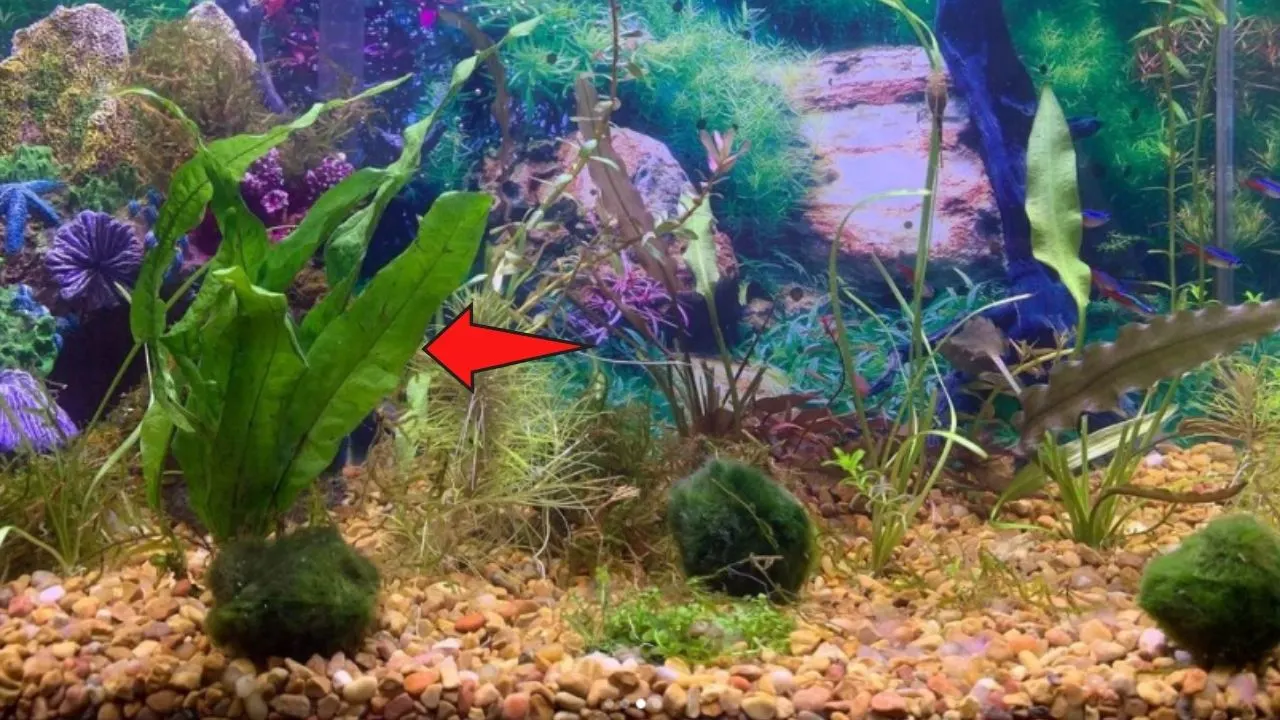
Photo Credit: @swedishrainbow_garden on Instagram!
This is another great plant that is inexpensive, low maintenance, and easy to care for. It is known to grow stunning flowers even when kept inside the aquarium.
Its binomial nomenclature and basic plant care requirements include:
- Common name: Kekatiya and Wavy-edged Aponogeton
- Family: Aponogetonaceae
- Scientific name: Aponogeton Crispus
- Minimum tank size: 20 gallons
- Max height: 8 to 12 inches (20 – 30+ cm)
- Care complexity: easy to care for
- pH: below 7.5
- Lighting needs: No specific requirements
- Growth rate: grows fast, and tall
- Flower: white color
- Recommended position: Mid position
- Fertilization: Needs root tabs throughout the month.
- Temperature: 59 to 89 degrees Fahrenheit (15 – 32 degrees Celsius)
Aponogeton Crispus can also be kept under low light for growth, but this can affect the speed at which your plant grows.
Under Aponogeton, Crispus will grow best under moderate light.
Conclusion
Fast-growing plants always seem like an ideal investment, and this assumption is right. You can quickly bring to life the aquascape you desire by giving them the right treatment.
The only thing you really have to look after in fast-growing plants is how often you need to prune them, which usually does not take long.
While not all of them are good, the ones mentioned in this list are a few of the best investments you can make to increase the aesthetics of your aquarium while providing ample sustenance.

Daniel has been a plant enthusiast for over 20 years. He owns hundreds of houseplants and prepares for the chili growing seasons yearly with great anticipation. His favorite plants are plant species in the Araceae family, such as Monstera, Philodendron, and Anthurium. He also loves gardening and is growing hot peppers, tomatoes, and many more vegetables.


